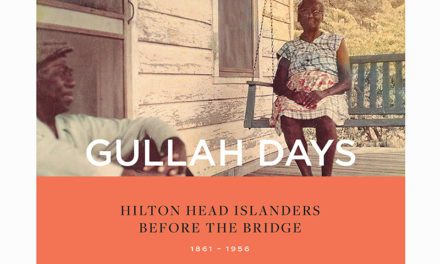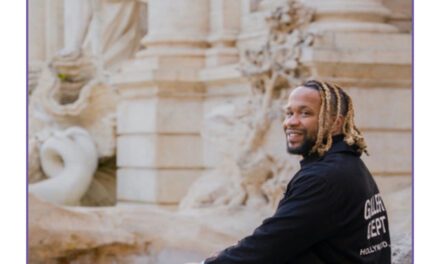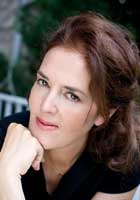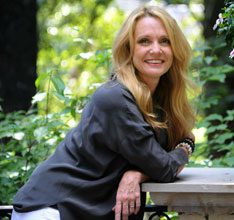 A Conversation with Bestselling Author Patti Callahan Henry
A Conversation with Bestselling Author Patti Callahan Henry
By Margaret Evans, Editor
Patti Callahan Henry is a New York Times bestselling author of twelve novels, including the The Bookshop at Water’s End, which is dedicated to Pat Conroy and will be published in July. She’s been a finalist in the Townsend Prize for Fiction, an Indie Next Pick, a Southern Independent Booksellers Alliance (SIBA) Okra pick (a booksellers’ favorite), and a multiple nominee for the SIBA Novel of the Year. The mother of three children, Patti now lives in both Mountain Brook, Alabama, and Bluffton, South Carolina, with her husband. She will be the Pat Conroy Literary Center’s Visiting Writers Series guest author on July 14, appearing in conversation with fellow novelist Ellen Malphrus. Patti recently joined me on the virtual porch of the Conroy Center to chat about her new novel and her writing life.
Margaret Evans: Welcome, Patti. Before we talk about your new book, let’s start with a question we love to ask here on The Porch: Do you have a Pat Conroy story?
Patti Callahan Henry: A Conroy story? There are so many good ones, even second hand, but for me the memories of Pat combine into one overall impression – open-hearted gentleness and kindness. Even below the biting humor there was a gentle message of deep love for the world. And I wish I’d saved every message of his in my voicemail that started, “Patti, why won’t you answer? I guess I’m the only one keeping this dying friendship alive.” I know he said it to everyone, but the power of it makes me smile still.
ME: Ha! I am familiar with that greeting, and thankfully even have one saved on my phone. I still listen to it when I’m feeling blue. . . . So let’s talk aboutThe Bookshop at Water’s End. By my count, it’s your 12th book. That’s an impressive number for a relatively young woman â I say “young” because we’re the same age. How long does it typically take you to bring a book to completion, from concept to finished product?
PCH: Oh, Margaret, I love being called “young” or at least “relatively young.” Each book has its own trajectory, and its own timeline. I would say the average is eighteen months, the longest being four years and the shortest being twelve months (the novella). I wrot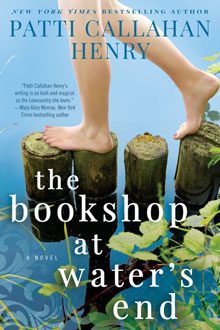 e for four years before I was published, so I had a few things waiting for the world. Each novel finds its way into the world in different ways, through different inspirations and on different timelines.
e for four years before I was published, so I had a few things waiting for the world. Each novel finds its way into the world in different ways, through different inspirations and on different timelines.
ME: We like to talk about the writing life here on the Porch, and everybody’s is different. What’s a typical day like when you’re working on a book?
PCH: When I am deep in writing a book I do my very best to rise and write first thing. I prefer my writing time in the quiet morning hours. It’s a habit I began when I first started writing and my kids were young, so I wrote from 4:30 to 6:30 a.m. Of course I don’t do that anymore, and my kids are grown now, but the morning habit continues. I find it to be the time when I am the freshest and most aware of the liminal spaces between “real” life and “imagined” life. In the morning, I can drop into the creative sphere easier than I can once the day takes me over. But if I am running up against deadline, or riding a (rare) surge of inspiration, I can write at any time or in any place.
ME:Tell me a little bit about your inspiration for Bookshop. Is Watersend based on a real town? Do you “know” any of the characters in real life? What about the titular bookshop itself? Is it modeled after a favorite tour stop of yours?
PCH:Bookshopwas a melding of two separate inspirations. It first began as an idea to write about a woman who lost her identity, job, and “self” she had spent all her life creating. Then, as I started the story I visited an old childhood summer haunt in Cape Cod, MA. I realized, as I stepped onto that landscape, that the geography held memories. I was overcome with the knowledge that there were things I hadn’t remembered until I stepped foot on that land again. I now had not only the protagonist (Bonny, the E.R. physician), but also the place she must return to (a childhood summer home that brings up that past). She must remember and heal before she can move forward. I didn’t write about any “real life” characters in my own world, but I am sure that I filter through subconscious memories and images. The bookshop itself is an amalgam of all my favorite bookshops and one I wish I had right around the corner.
ME: A reoccurring theme in your book is technology – particularly social media – and how something that’s supposed to connect us can actually isolate us, separating us from what’s real and meaningful. This is a personal obsession of mine, something I’ve experienced and write about often as a columnist. I’m wondering if it’s something you’ve struggled with yourself, or just something you’ve observed in others, particularly our children’s generation?
PCH: Indeed, the problem is that what is meant to make us feel connected can also make us feel “less than” or isolated. When a teenager is scrolling through Instagram and sees the best of someone’s day and compares it with the worst of her day, she can feel both lonely and diminished. It’s a terrible way to live – comparing your life to the filtered photos of another’s life. I wanted to show how this affected Piper (the nineteen-year-old in the novel). I wanted her to learn to engage with the wonder of her own life and stop comparing it to another’s. This awakening often happens through tragedy when one discovers that their life is their own and they must forge a path that belongs only to them.
ME: Your father was a Presbyterian minister. Did growing up a preacher’s kid inspire you toward your own “calling”? Do you think the two vocations – minister and storyteller – are in any way comparable?
PCH: I’m not sure that my dad’s job inspired my own, but I do believe that writing is a “calling” as you so aptly referred to it. When I first started writing novels, I was a Clinical Nurse Specialist, and I never once thought of creative writing as a “job,” but as a way to reach into my own life and connect with others. Of course now it is a “job” just as much as a vocation or calling. All I knew then and know now is that it would be harder to stop writing than to continue writing against all odds.
ME: Speaking of your former career as a Clinical Nurse Specialist . . . your protagonist in Bookshop is an E.R. doctor who’s had her confidence shaken by an incident in her emergency room. Did you draw on your own medical experience when creating the character of Bonny?
PCH: This is my 12th novel and yet the first one where I have given my protagonist a medical job. I definitely drew on my own medical experience, especially the deep desire to enter that field with the conviction tha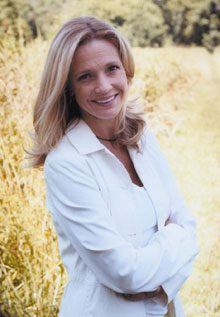 t it is a “calling” and that the human body is a mystery. I wanted Bonny to be so identified with her job that when something went wrong her entire identity was called into question. We must each find out who we are beyond the labels and masks, and Bonny needed to lose her E.R. doc mask to do so.
t it is a “calling” and that the human body is a mystery. I wanted Bonny to be so identified with her job that when something went wrong her entire identity was called into question. We must each find out who we are beyond the labels and masks, and Bonny needed to lose her E.R. doc mask to do so.
ME: The river looms large inBookshop,as rivers do in so many southern novels. What is it about southern writers and rivers?
PCH: I admit it, I have a river obsession. I can’t speak for other southern writers but for me, rivers are a metaphor for all of life. There is a poem titled “Trust” by Thomas R. Smith and it states “. . . and the river, even when frozen, arrives at the right place.” This truth touches me on every level – how to trust life and where it is going. I just returned from a trip in Ireland and an old Irish farmer told me (and I’m sure it is from a poem) that the sea does not care how you reach it, winding or straight, it receives you with gratitude. The river winds through my life and my stories as the metaphor and landscape of a life. Tidal rivers – like the one in this novel – are full of teaming life, tides, and currents that fill and empty the marshes, and their rushing waters are a balm to my soul.
ME: I was touched and amused that the two best friends in the book, Lainey and Bonny, had formed a Girl Detectives Club around the age of 12, modeling themselves after their idol, Nancy Drew. I was a Nancy Drew fanatic myself, and even started a neighborhood detective agency in my Alabama hometown when I was about that age. I’m wondering if you, too, were once a Girl Detective?
PCH: Oh, I love that you were a Girl Detective. I was not, but oh how I wanted to be one. Sometimes when I write a novel, I find that I have injected parts of my “lost life” into the story. I have never lived in a small town, and yet I find myself writing about them. It’s as if the lives I never lived travel alongside me and, every once in a while, show up in stories.
ME: According to your website, you have something like 25 appearances to make on your book tour in July. That sounds exhausting. What keeps you going?
PCH: Meeting my readers is energizing. I put aside these weeks and know that although I will be physically exhausted, I will be deeply enriched by the experiences and the people along the way. I don’t tell stories so I can isolate myself; I tell stories to connect to the larger world of human experience, and that is what keeps me going!
ME: Well, your readers can’t wait to help “energize” you when you visit Beaufort on July 14. Thanks for joining me here on the Porch of the Pat Conroy Literary Center. Come back anytime!
Patti Callahan Henry will be in conversation with Ellen Malphrus in the auditorium of TCL (building 12) in Beaufort on Friday, July 14 from 7:30 - 9 pm. The event is FREE to the public, and books will be available for purchase and autographing. For more Porch Talk, visit www.patconroyliterarycenter.org

